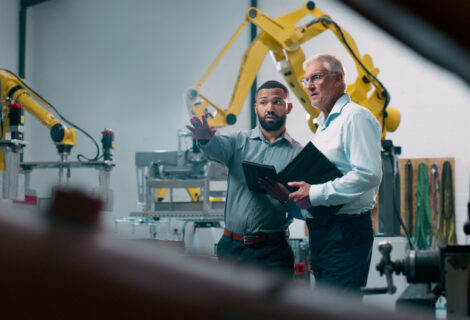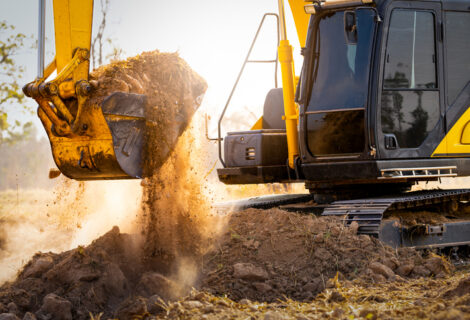How to Finance Heavy Equipment for Small Businesses
Acquiring the right equipment is a critical step for small business owners, construction companies, and equipment managers seeking to expand or improve their operations. Whether you’re running a construction firm or managing industrial projects, heavy equipment like machinery, vehicles, or tools plays a pivotal role in ensuring efficiency and productivity.
However, financing such equipment can often feel overwhelming. This guide will walk you through the key steps, options, and strategies to simplify the process and secure the financing that aligns with your business needs.
How Does Heavy Equipment Financing Work?
When purchasing equipment, you typically have two primary options to finance the acquisition—equipment loans and equipment leasing. Both options allow you to access the equipment you need without hefty upfront payments.
Equipment Loans
An equipment loan involves borrowing a lump sum from a lender to purchase the equipment outright.
- Pros: You own the equipment once the loan is paid off. The equipment itself acts as collateral, which could mean lower interest rates compared to unsecured loans.
- Cons: Lenders require a down payment (usually 15-20% of the equipment’s value), and qualification depends on your creditworthiness and business track record.
Equipment Leasing
Leasing allows you to rent the equipment for a set term (e.g., 2–5 years). You’ll make monthly payments during the lease, with the option to purchase the equipment at the end of the term.
- Pros: Smaller or no upfront costs, lease payments may be tax-deductible, and you’re not tied to outdated equipment as leases can be upgraded to newer models.
- Cons: Total lease costs can be higher if you plan to own the equipment long-term, and ownership is not guaranteed unless explicitly stated in the lease terms.
The right financing option depends on your cash flow, budget, and long-term goals. Speak to financial advisors or funding specialists to weigh the pros and cons before deciding.
How to Qualify for a Heavy Equipment Loan
Before applying, it’s essential to understand the minimum requirements most lenders expect when considering loan applications.
- Time in Business
Lenders typically require your business to have been operational for at least 1 year as proof of stability.
- Credit Score
A credit score of 600 or above is usually needed. Higher credit scores (650+) may help secure better interest rates.
- Annual Revenue
Your business should generate at least $250,000 annually to show you have the financial means to make regular payments.
- Down Payment
Plan to make a down payment, often around 20% of the equipment’s cost.
- Collateral
Most heavy equipment loans use the equipment itself as collateral, but additional collateral may be required for added security.
Step-by-Step Guide to Financing Heavy Equipment
Here is how to finance heavy equipment, broken into actionable steps:
1. Assess Your Needs and Budget
Start by identifying the type of equipment you need and how it will benefit your business. Factor in costs such as taxes and fees alongside the price of the equipment.
2. Research Financing Options
Explore financing avenues, such as loans, leasing, vendor financing, rent-to-own programs, or government aid. Each has its unique benefits.
3. Compare Lenders
Apply to multiple lenders for quotes. Compare interest rates, repayment terms, and associated fees. This ensures you choose a solution that works for your financial situation.
4. Prepare Documentation
Lenders may request financial documents such as tax returns, business revenue statements, and balance sheets. Organize all paperwork in advance to streamline the application process.
5. Select a Financing Option
Carefully review loan or lease agreements to confirm the terms fit your budget and timelines. Sign the agreement and finalize the paperwork.
6. Acquire the Equipment
Once approved, the funds will be disbursed, allowing you to purchase or lease the equipment. Put it to work for your business and start reaping the benefits immediately.
Where to Get Heavy Equipment Financing
A variety of lenders offer financing tailored to heavy equipment. Here are the most common options:
1. Small Business Administration (SBA) Loans
The SBA provides loan guarantees, encouraging lenders to finance small businesses with less risk.
- 7(a) Loans: Cover working capital and fixed assets like equipment, with amounts up to $5.5 million.
- 504 Loans: Provide long-term, fixed-rate financing through SBA-approved development companies, ideal for equipment or facility growth.
2. Traditional Banks
Banks have lower interest rates and fixed payment terms for predictable budgeting. However, these loans often have stricter qualification criteria, requiring excellent credit and lengthy time in business.
3. Online Lenders
Online lenders offer faster application processes and funding compared to traditional banks. They are also more flexible, considering factors like cash flow and business performance rather than solely credit scores. Tools like SmallBusinessLoans.com help connect borrowers with multiple lenders, offering term loans, lines of credit, and more.
How to Find the Right Financing Option
Choosing the best equipment financing requires careful evaluation of the following factors:
- Interest Rates: Determine whether the rates are fixed or variable to understand the potential cost over time.
- Repayment Terms: Check the loan duration, payment frequency, and prepayment penalties.
- Fees: Account for origination fees, closing costs, and any hidden charges.
- Customer Service: Read reviews of the lender to verify their reliability and support.
FAQs About Heavy Equipment Financing
Can I Get an Equipment Loan with Bad Credit?
Yes, but loans for those with bad credit usually come with higher interest rates. A cosigner may be required to secure financing.
Do I Need Collateral for Equipment Financing?
Most equipment loans are self-secured, meaning the equipment acts as collateral. Some lenders may require additional security depending on your financial history.
What is the Typical Term for Heavy Equipment Loans?
Loan terms usually range from 3 to 7 years based on the equipment type and size of the loan.
Unlock the Power of Equipment Financing for Your Business
Financing heavy equipment doesn’t have to be complicated. By understanding your options, preparing the necessary documentation, and working with the right lenders, you can secure the equipment needed to grow your business and thrive in your industry.





